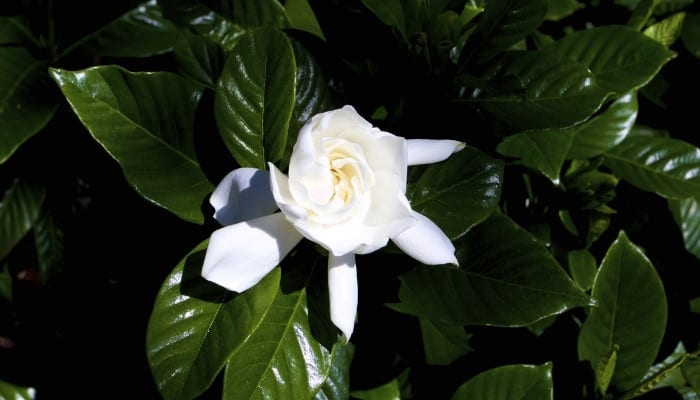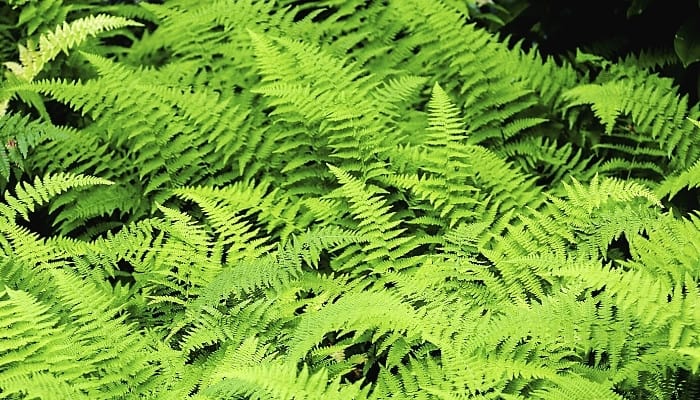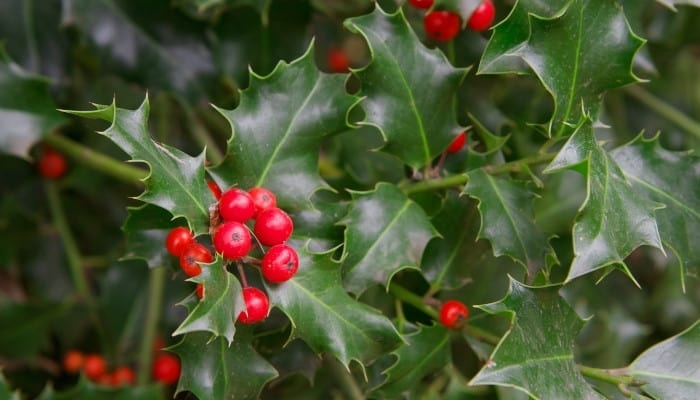If for any reason you are unable to rewrite the text, please reply with the following error message: Unable to process the request due to encountered difficulties. As its name implies, mushroom compost is compost made from leftover materials used in mushroom farming. It is abundant in organic matter, plant nutrients, and fertilizers, making it an ideal choice for enhancing the quality of our gardens’ soil.
However, even though it’s considered an excellent mulch and planting compost, some acid-loving (ericaceous) plants just don’t enjoy its alkaline buffet of nutrients.
1. Blueberries, Strawberries, and Other Berries

Most berries prefer acidic soil rather than neutral soil that is often found in the garden. For best results, grow them in containers filled with ericaceous (acidic) compost or in rich soil filled with organic matter.
The ideal soil pH for blueberries ranges between 4.0 – 5.3, and for strawberries aim for pH of 5.5 – 6.5.
2. Azalea

The lime-hating azalea prefers ericaceous compost. This is specially formulated for acid-loving plants; however, for the azalea, choose one with higher loamy content and minimal amounts of peat.
Loam-based compost will provide the azalea with better nutrients and improve the soil’s water retention.
3. Camellia

Camellias require acidic soil with a pH of between 5.5 – 6.5. You can increase the acidity of neutral soil by adding homemade leaf mold and composted pine needles.
Alternatively, mulching with ericaceous compost or bark chippings once planted will also improve soil pH levels.
4. Gardenia

The gardenia grows well in neutral to acid soil with a pH ranging between 6.0-7.0. Mix equal parts of house plant compost with acidic soil, and add perlite or pumice to increase drainage.
Mulching with pine straw or chipped wood mulch will conserve moisture, prevent weed growth, and provide beneficial nutrients to the plant as it grows.
5. Fern

Ferns prefer neutral to acidic soils rich in organic matter, usually from garden compost or leaf mold.
You can improve the soil structure for ferns by adding garden compost made from lawn cuttings and vegetable peelings or leaf mold made from oak, beech, or hornbeam leaves.
6. Aster

The aster enjoys a well-draining multipurpose compost. Their preferred type of soil is loamy, but the pH level can vary depending on the variety of aster.
When preparing the soil, mix in composted manure or other organic matter to provide nutrients.
7. Salvia

Many varieties of salvia do well in standard garden compost mixtures. However, whether they prefer moisture or almost dry soil conditions is determined by the variety of salvia.
The ideal soil pH is between 5.5 – 6.5. To increase the soil acidity, add aluminium sulphate, soil sulphur, or chelated iron. Alternatively, you can add organic compost to the soil when planting.
8. Geranium

Geraniums enjoy well-draining compost rich in organic matter and high in nutrients. These plants grow well in neutral to alkaline potting mixes.
Use a slow-release fertilizer containing bone meal and rock phosphate (find it hereat a great price) to encourage flowering.
However, vermicompost containing worms and vegetable waste also provides excellent slow-release nutrients for this nutrient-loving plant.
9. Rhododendron

Like the azalea, the rhododendron requires acidic soil to grow. Use ericaceous or peat-based compost for best results.
You can also add peat, organic green waste, and a general fertilizer to improve the soil.
The rhododendron enjoys peat soil with a pH range between 4.5 – 6. Apply ammonium sulfate to the soil before planting to increase its acidity.
10. Holly

Holly can survive in a range of soil conditions; however, it thrives in acidic to neutral soil with a pH range between 5.0 – 7.0.
Condition the soil with quality organic compost, or use it as mulch to increase and maintain soil acidity. A wood chip or pine straw mulch will provide added nutrients to the soil as it decomposes.
11. Juniper

The juniper tree grows best in acidic soil with a pH range of 5.0 – 7.0; however, it is forgiving when grown in poor soil and will happily flourish.
Adding homemade or commercial compost to the soil provides juniper with well-draining, nutrient-rich soil.
The ideal soil mix for juniper is equal parts garden soil, organic compost, and a few small stones for drainage.
12. Sage

A healthy dose of manure or well-rotted garden compost is perfect for the sun-loving sage plant.
In addition, you can deep mulch (3 inches deep) using bark chippings and garden compost. However, avoid over-fertilizing as this reduces its exquisite flavor.
13. Lupine

The lupine grows best in neutral to slightly acidic soils; however, it can also survive in highly acidic soils.
Optimum pH levels range between 5.5 – 7.0, and the soil should be rich in organic matter and well-draining.
These plants don’t require a lot of fertilizing as this may cause excessive foliage growth and reduce bloom development.
Using an acidifying fertilizer helps to lower the pH of alkaline soil.
14. Heather

The heather shrub loves neutral to acidic growing conditions and plenty of sunshine.
Soil pH levels should be 6.5 or less and enriched with organic matter such as composted bracken, pine needles, or well-rotted leaf mold.
An acidic (ericaceous) compost and slow-release fertilizer promote healthy heather growth.
15. Zinnia

The happy-go-lucky zinnia isn’t a soil snob; however, it enjoys well-draining, humus-rich, fertile soil.
In addition, optimum growth results are seen when the soil pH is kept between 5.5 -7.5. For vigorous growth, use peat-free, well-draining compost.
16. Japanese Maple

This small hardy tree grows best in slightly acidic soils. It enjoys humus-rich soil types that are well-draining.
If the soil requires improving, you can use organic matter such as well-rotted garden compost or specific soil improvers sold at most garden centers.
They dislike alkaline soils and produce amazing leaf colors when grown in acidic soil.
Mushroom Compost Alternatives
Potting Soil
Potting soil is a balanced mixture of peat moss, tree bark, and perlite. It provides a lightweight, well-draining medium for plants and their delicate root systems.
While it lacks nutrients and minerals, slow-release fertilizers can be added to provide the nutrients required for healthy plant growth.
In addition, potting soil comes in varying pH levels ranging from 0-14. This means you can select the potting soil according to the plant’s growing requirements.
Therefore plants that prefer acidic soils and dislike mushroom compost may grow better in containers filled with potting soil suited to their specific pH levels.
Cow Manure
Unlike mushroom compost, cow manure does not have a high salt level and therefore won’t affect sensitive plants such as azaleas.
In addition, cow manure provides high levels of nutrients for your plants and increases the water retentiveness of poorer soils.
This means your watering schedule may not be as rigorous when using cow manure on your plants.
Lastly, cow manure improves soil quality and promotes the growth of healthy bacteria leading to easier uptake of nutrients by plants.
Just make sure that the manure has been thoroughly composted before use, or purchase cow manure compost that is ready for immediate application (I use this brand in my gardens).
Mulch
Mulch can be made up of leaf mold, hay, manure, bark chippings, pine straw, crushed eggshells, or a number of other options.
Apply the mulch in a thick layer around the base of the plant. Where deep mulching is required, dig it into the top layer of soil.
This provides a protective barrier against moisture loss, weeds, and cold weather. In addition, mulch provides beneficial nutrients to the plant as it decomposes.
There are various types of mulch you can use; these include:
- Chopped organic wheat straw is long-lasting and provides nutrients to the soil.
- Gravel or grit is excellent for preventing rotting at the base of plants.
- Bark not only looks good in the garden but improves soil quality as it decomposes.
- Well-rotted manure is an excellent source of nutrients and is easily purchased at most garden centers or farms.
Worm Composting
This type of composting is excellent for small gardens.
Instead of adding your kitchen and garden waste to a traditional compost heap or bin, it is added to a specialized bin containing a mixture of red or tiger worms.
These are not the usual earthworms found in the garden and are much smaller.
The wormery (composter) is divided into two sections. One section contains the worms, to which you add the waste, and the other section is where the liquid fertilizer collects.
This liquid fertilizer can be added to pot plants or directly to the soil to enrich and feed your plants.
Kitchen/Garden Waste Compost
If your garden has the space for a compost heap, this is an excellent way to provide nutrients to your plants.
Kitchen waste such as fruit and vegetable peelings, tea leaves, coffee grounds, and eggshells can all be added to the compost.
In addition, you should add garden waste, such as weeds, leaves, wood chips, or hay to ensure the compost is balanced.
Avoid adding animal products, dairy, grease, and oil to your compost as these can either take too long to decay or provide a smelly habitat for rodents and pests.
Final Thoughts
Adding mushroom compost to the soil is an excellent way of providing additional nutrients to plants. It’s perfect for the vegetable garden and is great for fruits and certain types of flowers.
However, not every plant enjoys the alkalinity that mushroom compost adds to the soil; therefore, it’s best to check before adding it to your plants’ diets!

